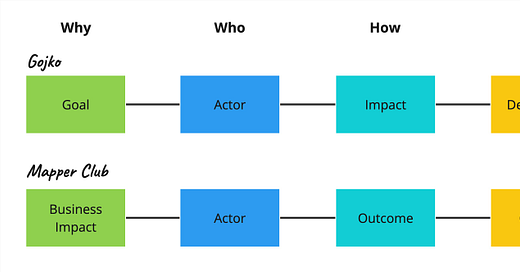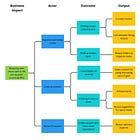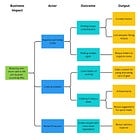In the coming days, I want to dive into Impact Maps.
This method was developed by Gojko Adzic and was put nicely together in his short book Impact Mapping.
The main goal of impact mapping is to make the connection between business impact and team outputs visible to everybody.
Impact Maps are based on four key questions:
Why are we doing this?
Who is influencing?
How are they influencing?
What can we do to support this?
These four questions are connected within this method.
Let’s dive into what each question is trying to answer.
The original terminology diverges from what we use as established product terminology, so I changed the terminology to be a better fit. I’m not the first one to change this. For example, Büşra also uses these updated terms.
Why describes the Business Goal. This is what your organization wants to achieve. Why are we doing this? In most current product material, this is expressed as Business Impact.
Clarifying the Why is vital to aligning everybody when you start an initiative or project. You can always look back at the intended Business Impact to keep everybody aligned.
The why doesn’t describe any solution. It tells what you want to achieve in clearly defined measurable terms.
Who defines the Actors who influence the Business Impact. These are users, customers, regulators, and other stakeholders directly influencing the impact.
This is not the team building the solution but the groups we need to get into action to drive our business impact.
How describes the behavior change of the affected actors. In Impact Mapping, this is called the Impact. In current Product jargon, we mainly use the term Outcome to describe this.
What describes what we as an organization can do to drive this. This is the level describing high-level deliverables and features we could create. In current Product terms, we call this the Output. This doesn’t necessarily need to be software features. It can include activities from marketing, sales, or other organizational functions.









